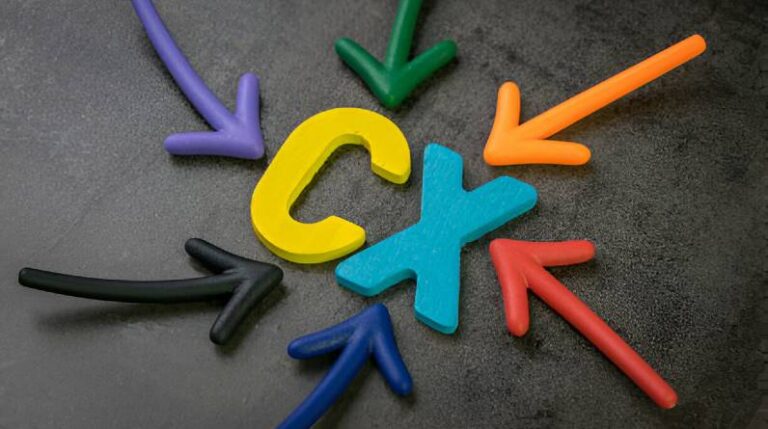In today’s hyper-competitive market, delivering exceptional customer experiences (CX) isn’t just a differentiator—it’s a necessity. A well-executed customer experience strategy can transform casual buyers into loyal advocates, strengthen your brand reputation, and fuel long-term revenue growth. Yet, many businesses still struggle to understand what CX really entails and how to implement it effectively.
This guide will walk you through the complete process of developing a customer-centric CX strategy, how it differs from traditional customer service, and why investing in it now is one of the most powerful moves you can make for your organization’s future.
What Is a Customer Experience Strategy?
A customer experience (CX) strategy is a deliberate plan that defines how your company delivers value across every customer interaction. It goes beyond one-off improvements or department-specific changes. Instead, it looks at the entire customer journey, focusing on consistency, emotional connection, and continuous improvement.
Where customer service often involves resolving issues after a problem arises, CX is proactive and holistic. It considers every touchpoint—from initial awareness and browsing your website to post-purchase support and brand advocacy.
Why CX Matters More Than Ever
According to research from the Walker Group, customer experience is predicted to surpass price and product as the key brand differentiator. This means companies that prioritize CX can gain a competitive edge, even in crowded markets. The data supports this:
- 94% of consumers who rate a company’s CX as “very good” are likely to make repeat purchases.
- Customers are more forgiving of mistakes when they’ve had consistently positive experiences.
- Nearly 90% of satisfied customers are more likely to trust the brand with their future needs.
More than a buzzword, CX is a strategic lever that builds emotional equity and resilience, especially during economic downturns or service disruptions.
How CX Differs From Customer Service
Many companies confuse customer experience with customer service, but the two are not interchangeable:
| Aspect | Customer Service | Customer Experience |
| Scope | Specific moments (e.g., support calls) | End-to-end journey |
| Ownership | One team (e.g., support) | Every team: marketing, product, billing, etc. |
| Proactive? | Reactive | Proactive |
| Focus | Problem-solving | Relationship-building and emotional connection |
Understanding this distinction is crucial. While excellent service is part of good CX, true customer experience excellence requires company-wide alignment.
Three Key Phases of a Strong CX Strategy
Creating a winning CX strategy involves three strategic phases: research and planning, journey mapping, and designing the future-state experience.
1. Prepare: Understand Your Customers and Stakeholders
a. Customer Research and Personas
Start by understanding your audience through data-driven personas. These fictional yet research-based profiles represent the common traits of your ideal customers, including their:
- Demographics
- Pain points
- Goals
- Motivations
- Preferred channels
Use customer interviews, surveys, and analytics tools to build 3–5 personas that reflect your most valuable segments.
b. Empathy Mapping
Empathy maps help internal teams step into the customer’s shoes. They’re structured around what a customer thinks, feels, says, and does, and they highlight emotional and behavioral patterns that might otherwise be overlooked.
c. Stakeholder Mapping
Because CX touches every part of your business, stakeholder buy-in is essential. Use stakeholder mapping to identify:
- Champions (high influence, high support)
- Supporters (low influence, high support)
- Gatekeepers (high influence, low support)
- Bystanders (low influence, low support)
This helps you engage the right people at the right time and smooth cross-departmental collaboration.
2. Map: Define and Optimize the Customer Journey
a. Define the Challenge
Before you dive into mapping, clarify your objective. Use a focusing challenge framework:
“(Who) can (do what) so that (why: the outcome).”
This ensures your team shares a clear understanding of the problem you’re solving and the customer goal you’re enabling.
b. Customer Journey Mapping
A customer journey map outlines the key stages and emotions a customer experiences when interacting with your brand. You can use the 5 A’s Framework to structure your map:
- Attract – How are customers finding you?
- Accept – What makes them decide to engage?
- Adopt – What is their experience as they use your product?
- Amplify – How do they feel after the interaction?
- Advance – What ongoing relationship-building occurs?
Journey mapping uncovers pain points and opportunities you may not realize exist—from a confusing checkout process to a lack of follow-up after purchase.
3. Design: Create the Future-State Experience
a. Root Cause Analysis (5 Whys)
When you discover customer pain points, go deeper using the 5 Whys technique. For example:
Problem: High cart abandonment
Why? The checkout is too long
Why? Too many form fields
Why? System requires duplicate info…
(Continue until you reach the core issue.)
This exercise uncovers actionable insights that prevent recurring problems.
b. Brainstorm Innovative Solutions
Effective brainstorming requires both divergent and convergent thinking. Use techniques like:
- Classic Ideation – List all possible ideas.
- What If? – Ask hypothetical “what if” questions to challenge norms.
- Wrong Way – Deliberately think of bad ideas to expose overlooked opportunities.
- Risky Options – Encourage bold, creative ideas without fear of judgment.
c. Experience Design Development
Once you have solutions, filter them using this framework:
We believe (idea) will solve (customer need), enabled by (technology/process), resulting in (positive outcome).
Rank each initiative based on customer value and business impact, and prototype the most promising ideas before full implementation.
Measuring and Managing Customer Experience
Even the best-designed strategy is meaningless without measurement and feedback loops. Use customer experience management (CXM) software to:
- Track sentiment through surveys and feedback tools
- Analyze performance across touchpoints
- Identify trends and issues in real-time
- Automate alerts and response workflows
Common CX metrics include:
- Net Promoter Score (NPS)
- Customer Satisfaction Score (CSAT)
- Customer Effort Score (CES)
- Customer Retention Rate
- Time to Resolution
Regularly reviewing these metrics ensures continuous improvement and agility in your CX strategy.
The Role of CX Consultants and Why Demand Is Growing
Given the complexity and cross-functional nature of CX, many companies are turning to customer experience consultants for help. These professionals bring a unique blend of expertise in:
- Customer research and behavioral analysis
- Digital transformation
- Employee enablement
- Stakeholder engagement
- Technology and data integration
As more companies recognize CX as a long-term growth driver, demand for skilled CX consultants is rising globally—especially those with practical, industry-specific experience.
Final Thoughts: Building a Culture of Customer Obsession
A world-class CX strategy isn’t built overnight. It requires deep customer empathy, clear alignment across teams, and a willingness to adapt. But the payoff is enormous: increased loyalty, reduced churn, and sustainable revenue growth.
Whether you’re just starting or optimizing an existing approach, the most important thing is to stay anchored in customer needs and intent. Treat CX not as a department or a checklist, but as a company-wide mindset.
When you create experiences that customers remember and love, you don’t just win sales—you win hearts.
For more insightful articles and the latest updates, keep visiting Hacoo.

